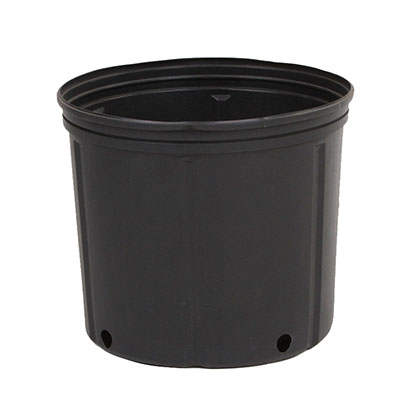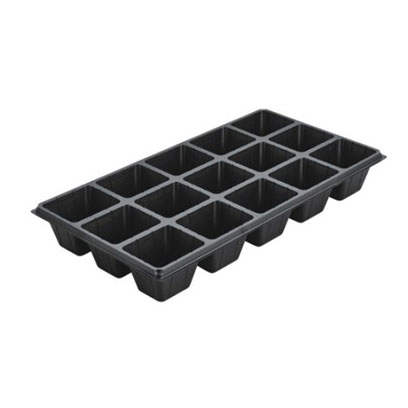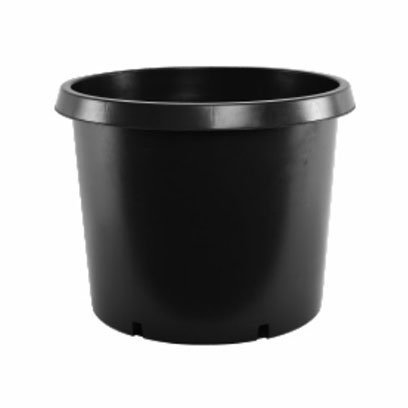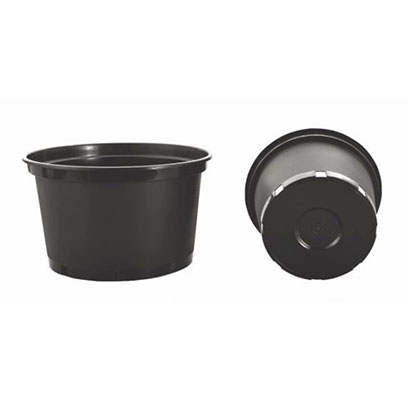I. Introduction
You can use Jalapeno peppers in many cuisines. They add flavor and heat to dishes. This makes them a favorite among food enthusiasts. You can easily purchase jalapenos from grocery stores. But growing them at home is cost-effective. You will have a continuous supply of fresh peppers. We will discuss everything you need to know about growing jalapenos in pots.
II. Why Grow Jalapenos in Pots?
1. Flexibility and Mobility
Growing jalapenos in pots allows for more control over the growing conditions. You can easily move jalapeno plants in pots to different locations. You can bring potted jalapenos inside during cold months. This extends the growing season and allows for a longer harvest. You can enjoy fresh jalapenos even when they are typically out of season.
In addition, you can easily switch out the potting soil for jalapenos. Or add in different nutrients to see what works best for your jalapeno plants. This level of flexibility is not as easily achievable with traditional in-ground gardening.
2. Space-Saving Aspect
Another advantage of growing jalapenos in containers is the space-saving aspect. Container gardening allows you to grow plants in a smaller area. It is perfect for those with limited outdoor space. You can easily place plastic pots on a balcony, patio or windowsill. It is an ideal option for urban dwellers. Because they may not have access to a traditional garden.
Container gardening also allows for vertical growing. Many varieties of jalapenos can grow upwards. They are suitable for hanging baskets and trellises. You can grow more plants in a small area.
III. Best Size Pot for Jalapeno Plant
When growing jalapeno peppers in containers, choose the right container for the success of your plants. The right jalapeno plant pot size and material can provide a healthy environment for your jalapeno plants.
1. Ideal Jalapeno Pot Size and Material
Make sure the jalapeno pepper pot size is at least 12 inches in diameter. The roots will have enough space to grow. Avoid using small pots. Because they can restrict root growth, leading to stunted plants. Additionally, a pot that is too small may dry out quickly. This results in stressed and unhealthy plants.
Terracotta pots are a popular choice. They are durable and have good drainage. However, they are also heavy and prone to cracking in extreme temperatures. Plastic pots are lightweight and have different sizes and shapes. They also retain moisture well.
2. Importance of Drainage
Jalapeno peppers growing in pots prefer well-drained soil. Excess water can accumulate at the bottom without proper drainage. This leads to root rot and other diseases. To ensure good drainage, choose 7 gallon nursery pots with drainage holes at the bottom. These holes will allow excess water to drain out of the pot, preventing waterlogged soil.
3. Tips for Choosing Pots with Good Drainage
When shopping for pots, it's important to check the drainage holes at the bottom. Avoid using containers without any drainage holes. Because they can cause water to accumulate and suffocate the plant's roots. Additionally, make sure there are enough drainage holes.
You can also place a layer of gravel or broken pottery pieces at the bottom of the pot before adding soil. The excess water can drain out. It also prevents the soil from clogging up the drainage holes.
4. Using Self-Watering Containers
Self-watering containers are an excellent option for growing jalapenos. Especially for those who may forget to water their plants regularly. These containers have a reservoir at the bottom. It holds water and releases it slowly into the soil as needed. This can maintain consistent moisture levels and prevent overwatering.
When using a self-watering container, make sure to fill the reservoir regularly. Especially during hot weather when plants may need more water. Monitor the moisture levels in the soil. Ensure it doesn't dry out completely.
IV. Selecting the Right Jalapeno Varieties
1. Popular Jalapeno Pepper Varieties
Early Jalapeno: This variety produces peppers earlier in the season compared to others. This is great if you live in a cool climate with short growing seasons.
Craig's Grande: This variety is known for its larger size. It is a great choice if you want to stuff your peppers or use them for salsa. It also has a milder heat level compared to other varieties.
Jalapeno M: This variety is perfect for container gardening. It has a compact growth habit and produces an abundance of peppers. Jalapeno M also has a medium heat level. So it is suitable for those who prefer less spicy peppers.
Jalapeno Tam: This variety is similar to the Early Jalapeno. But with larger and thicker fruits. It also has a slightly milder heat level. So Jalapeno Tam is perfect for those who enjoy the flavor of jalapenos without too much spice.
Purple Jalapeno: This unique variety produces purple peppers that turn red when ripe. It also has a medium heat level and is perfect for adding color to your container garden.
2. Factors to Consider When Choosing a Variety
Size: The main consideration is its size. Some varieties, like Craig's Grande, produce larger peppers. They are perfect for stuffing or using in dishes like salsa. You should choose a small variety if you have limited space.
Heat Level: Jalapenos are known for their heat level. But some varieties have a milder heat level than others. If you prefer less spicy peppers, look for varieties like Jalepeno M or Purple Jalapeno.
Growth Habit: As mentioned earlier, some jalapeno varieties have a more compact growth habit. This makes them ideal for container gardening. Other varieties can grow quite tall. For example, Craig's Grande. They may require staking or support to thrive in a container.
Days to Maturity: You should consider the amount of time it takes for a particular variety to mature and produce peppers. Some varieties, like Early Jalapeno, have a shorter maturity period. This makes them perfect for those who want to harvest their peppers sooner rather than later.
Resistance: Lastly, consider any resistance or tolerance that a jalapeno variety may have. This is especially important if your area has certain pests or diseases. Look for varieties that have resistance to common issues like tobacco mosaic virus or bacterial leaf spot.
V. How to Grow Jalapenos in Pots?
1. Soil for Jalapeno Peppers
You can combine some materials to create the best potting soil for jalapenos. For example, soil, compost, and perlite or vermiculite. Filling a large container with equal parts of potting soil and well-aged compost. The compost provides essential nutrients for your plants. While the potting soil acts as a base to hold moisture.
Add a generous amount of expanded perlite or vermiculite to the mix. These materials help with drainage and aeration. This ensures the roots of your jalapeno plants can breathe and grow properly.
Using a trowel or your hands, mix all the components together thoroughly until you have an evenly blended potting mix. You can also add in some organic slow-release fertilizer. This gives your plants an extra nutrient boost.
2. How to Grow Jalapeno Peppers in a Pot?
Just fill the containers with jalapeno soil. Leave an inch of space at the top. Planting jalapeno seeds in pots about a quarter-inch deep into the soil. Cover lightly with more potting mix. Water lightly. How many jalapeno plants per pot? Generally, one adult jalapeno plant requires a pot.
If using seedlings, gently remove them from their nursery pots. Place seedlings in the center of your jalapeno plant pot. Fill in the gaps with more potting mix. Gently press down around the seedling to secure it. Water your newly planted jalapenos thoroughly.
Place the containers in a location with 6 hours of sunlight per day. Consider using artificial grow lights to supplement the sunlight if you are growing jalapenos indoors.
As your jalapenos grow, keep the soil consistently moist, but not waterlogged. You can check if the plant needs watering by sticking your finger into the soil up to your first knuckle. If it feels dry, it's time to water.
Fertilize your plants every few weeks with a balanced fertilizer. Following the instructions on the packaging. This will provide essential nutrients for healthy growth.
When jalapeno pepper plants in pots grow taller, you may need to stake them for support to prevent them from drooping or breaking. Use bamboo stakes or tomato cages for this purpose.
VI. Sunlight and Temperature Requirements
1. Sunlight Needs of Jalapeno Plants
Ideally, jalapenos need at least six hours of direct sunlight every day. However, they can tolerate partial shade as well. So you can grow jalapenos in a pot on a balcony or patio. Jalapeno plants grown in shad areas may produce small peppers. Therefore, place your jalapeno pot in full sunlight for the majority of the day.
2. Protect Jalapeno Plants from Extreme Temperatures
Jalapeno plants prefer temperatures between 65°F to 85°F. You should monitor the temperature when growing jalapenos in pots. Ensures it stays within the optimal range. Extreme temperatures outside of this range can cause stress on the plants. This results in reduced growth and yield.
You can provide shade during the hottest part of the day in hot weather. For example, move jalapeno peppers growing in pots to a shadier spot or using a shade cloth. Ensure potted jalapeno plants have adequate water. This prevents them from drying out in the heat.
Protect your plants from frost in cold weather. Jalapeno plants in pots are more susceptible to freezing temperatures. Because the roots are not insulated by the ground like in-ground plants. To protect your jalapenos from frost, you can bring them indoors overnight or cover them with a blanket or tarp.
3. Moving Pots to Follow the Sun
As mentioned earlier, jalapeno plants require full sunlight for optimal growth and produce. So it is essential to move jalapeno pepper pot to follow the sun throughout the day. You can observe the sun hitting your outdoor space and move the pots accordingly.
VII. How to Care for Jalapeno Plants in Pots?
1. Watering Requirements for Potted Jalapenos
Jalapeno plant care in pot: Jalapeno peppers require consistent moisture, but not too much. You should water your plants regularly. But be careful not to overwater them. You can stick your finger about an inch into the soil to test the moisture level. , You need to water jalapenos in containers if it feels dry.
2. How to Avoid Overwatering or Underwatering?
Overwatering can lead to root rot and other fungal diseases. They can ultimately kill your jalapeno plants. To avoid overwatering, make sure the pots have proper drainage holes and use a well-draining potting mix. Additionally, water at the base of the plant rather than overhead to prevent excess moisture on the leaves.
Underwatering can cause stunted growth and wilting of your plants. To avoid underwatering, check the moisture level of the soil regularly and water when needed. You can also add mulch on top of the soil. This helps retain moisture.
3. Fertilization
Fertilization is essential for jalapeno in container. Because they are heavy feeders. You can use a balanced fertilizer once every two weeks. Don't over-fertilize jalapenos in pots. Because this can lead to excessive leaf growth and reduced fruit production.
You can also use organic matter to feed your jalapeno plants. This includes compost, aged manure, or worm castings. These organic materials can provide nutrients to your plants. They also improve soil structure and help retain moisture.
When using organic matter, mix it into the potting mix before planting. You can also add compost as a mulch. They will continually feed your plants throughout the growing season.
VIII. Pruning and Support for Growing Jalapenos in Pots
1. Importance of Pruning
Pruning is the process of removing certain parts of a plant to promote healthy growth. For example, branches or leaves. It is especially important for jalapeno plants. Because they have a tendency to become bushy and overcrowded.
By pruning your plants, you can prevent them from competing for nutrients and sunlight. It also promotes air circulation and prevents diseases. Some key benefits of pruning jalapeno plant in a pot include:
Increased yield: By removing excess leaves and branches, the plant can focus its energy on producing more peppers.
Better quality peppers: Pruning helps to direct nutrients towards the production of larger, more flavorful peppers.
Disease prevention: Crowded plants are more susceptible to diseases. But pruning can improve air circulation and reduce the risk of diseases.
2. Best Practices for Supporting Plants
Supporting your jalapeno plants is also crucial for their growth and yield. As they grow tall and produce peppers, the weight of the plant can cause it to droop or even break. By providing proper support, you can prevent this from happening.
Use stakes or cages: They are the most common methods of supporting plants in pots. Make sure to place them in the soil when transplanting your seedlings. Or as soon as they start growing. This will prevent root damage later on.
Tie up branches: As your plants grow, you may notice some branches becoming heavy with peppers. Use twist ties or string to gently tie these branches to the stakes or cages for support.
Regularly check and adjust: Regularly check your supports and make any necessary adjustments as your plants grow. They will continue to provide proper support and prevent any damage to the plants.
Research different methods: There are many ways to support plants. So do some research and find a suitable method. Some gardeners prefer using tomato cages or trellises. While others use DIY supports made of bamboo or other materials.
IX. Common Pests and Diseases in Growing Jalapenos in Pots
1. Common Pests
Aphids: These small insects suck the sap from the plant. They can cause stunted growth and yellowing of leaves.
Thrips: Thrips feed on the leaves and fruits of the plant. They leave behind silver streaks or scars.
Spider Mites: These tiny mites can cause severe damage to the plant. For example, suck jalapenos juices and leave behind webbing.
Flea Beetles: These beetles feed on the foliage of the plant. This creates small holes that can eventually kill it.
Caterpillars: The larvae of various moths and butterflies can eat away at the leaves and fruits of jalapeno plants.
2. Common Diseases
Bacterial Leaf Spot: This disease causes dark spots on the leaves, which eventually turn yellow and fall off.
Powdery Mildew: This fungal infection appears as a white powdery coating on the leaves, stunting their growth.
Root Rot: Overwatering or excessively wet soil can lead to root rot. This causes the plant's roots to rot and eventually kills it.
Verticillium Wilt: This fungal infection causes wilting and yellowing of leaves. They eventually lead to the death of the plant.
Phytophthora Blight: This disease causes dark spots on the fruits, which can eventually rot and fall off.
3. Prevention and Treatment Options
Preventing and treating these pests and diseases is crucial for the health of jalapeno plants. Here are some effective methods:
Hand-Picking: For small infestations, manually removing the pests by hand.
Natural Predators: Attracting natural predators to your garden. For example, ladybugs and lacewings. This can help control pest populations.
Insecticidal Soap: Spraying the plant with insecticidal soap. This can help eliminate pests without harming the plant.
Neem Oil: You can spray neem oil on plants to control pests. Its anti-fungal properties can help prevent diseases.
Crop Rotation: Rotating the location of your jalapeno plants each year. This can prevent soil-borne diseases.
Proper Watering: Avoid overwatering and ensure proper drainage. This prevents root rot and fungal infections.
Sanitation: Regularly cleaning and removing any dead or diseased plants. This can prevent the spread of diseases.
Companion Planting: Planting certain herbs and flowers alongside jalapenos. For example, marigolds and basil. This can repel pests and attract beneficial insects.
It is best to move the pots in the morning. Because the temperatures are cooler and plants are less likely to get stressed from being moved. You can also invest in a rolling plant caddy or use a dolly to make the moving process easier. Just be sure not to move the plants too often. Because this can also cause stress on them.
If you are growing jalapenos in pots indoors, place it near a south-facing window with the most sunlight. You may need to rotate the pots every few days. Ensure all sides of the plant receive adequate sunlight.
X. Harvesting and Storing Jalapenos
1. Determining When Jalapenos are Ready for Harvest
You should know when they are ripe and ready for picking. Jalapenos usually mature in 70 to 85 days after planting. Look out for visual cues rather than relying solely on the number of days. Another way is by gently squeezing them. Ripe jalapenos will be firm but slightly soft to the touch. If they feel hard, wait a few more days before checking again.
You can also look at their size and color. Fully ripe jalapenos are usually 2-3 inches long. They should also have a shiny green color that gradually turns red as they mature. If you prefer spicier peppers, you can leave them on the plant until they turn completely red.
Not all peppers on the plant will ripen at the same time. You may have some ready for harvest while others are still growing and changing color. In this case, you can pick the ripe ones and leave the rest to continue maturing.
2. Tips on Harvesting Without Damaging the Plant
Use sharp gardening shears or scissors to cut the peppers from the plant. Avoid pulling or twisting them, as this can damage the plant and affect future growth. Hold onto the stem of the pepper with one hand. Cutting it off with the other. This will prevent any accidental damage to the plant.
Harvest jalapenos in the morning when they are cool and crisp. Avoid picking them on hot afternoons as they may wilt and become more prone to damage. Be careful not to break any branches or leaves while harvesting.
3. Storing and Preserving Jalapeno Peppers
You can store jalapenos at room temperature for two weeks. Freezing or pickling jalapenos can store them for a long time. To freeze jalapenos, wash and dry them thoroughly. Then cut them into chop them. They can last six months in the freezer.
To pickle jalapenos, wash and dry them. Then slice jalapenos. Place them in a jar. You can add spices for extra flavor. For example, garlic or dill. Store the jar in the fridge for two months.
You can also dehydrate jalapenos to preserve them. They will last for six months. You can also grind dried peppers in a blender or spice grinder. Then, add the jalapeno powder to dishes as a flavorful. For example, soups, stews or marinades.
XI. Troubleshooting Common Issues
1. Common Problems
Yellowing Leaves: Gardeners will face yellowing leaves when growing jalapenos in pots. various reasons can cause this. For example, over-watering, nutrient deficiency, pests or diseases.
Wilting: Another problem is wilting of the plant. Under-watering, root damage or exposure to extreme temperatures can cause this.
Stunted Growth: If your jalapeno plants lack sunlight, poor soil quality or insufficient nutrients, they will not grow as expected.
2. Solutions and Tips
Yellowing Leaves: To address yellowing leaves, make sure you are not over-watering your plants. Allow the soil to dry out between waterings to prevent root rot. If the issue persists, it could be a nutrient deficiency. Consider using a balanced fertilizer specifically designed for peppers.
Wilting: Proper watering is key to preventing wilting. If your plants are exposed to intense sunlight, consider providing some shade. Or moving them to a spot with less direct sunlight.
Stunted Growth: Ensure jalapeno pepper plants in pots get at least 6 hours of direct sunlight daily. You should use well-draining soil with organic matter. You should fertilize jalapenos every 2-3 weeks.
XII. Conclusion
How to plant jalapenos in a pot? Growing jalapeno peppers in containers can enjoy fresh peppers at home. We have discussed the benefits of container gardening and the steps to successfully grow jalapenos in a pot. When you gain experience and see your peppers thrive, it becomes a fulfilling and enjoyable hobby.



